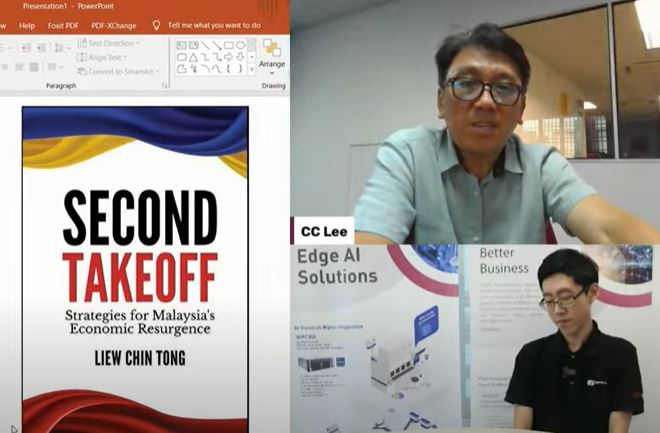
“During the ‘Jom! Let’s Sembang AIoT’ session, we kicked off our discussion with topics related to Malaysia’s New Industrial Master Plan 2030 (NIMP 2023) and a newly published book by the Deputy Minister of Investment, Trade, and Industry, Mr. Liew Chin Tong.
The concept of a ‘second takeoff’ highlighted in this book caught my attention during one of his interviews with a media outlet, mentioned Mr. CC Lee, the Founding Director of AIOTMission Sdn Bhd, during the live session.
Since we have not yet received the book, we’ll wait for its arrival to provide more commentary and insights from its content later. Our primary interest in examining the book is due to the significant factors it presents that are crucial to our economy and closely tied to the adoption of technologies like AI and IoT.
To begin, let’s take a closer look at the key goals of the NIMP 2030, recently announced by our Prime Minister.
” Key goals of the NIMP 2030 plugged out from the HSBC article:
From a big picture perspective, The NIMP 2030 framework includes several key macroeconomic targets. These targets cover various economic metrics and objectives to drive Malaysia’s economic growth and development in the next years. Some of the key macroeconomic targets outlined under NIMP 2030 are:
Increase the manufacturing sector’s value added by 61% to RM587.5 billion by 2030 (2022: RM364.1 billion); CAGR of +6.5%.
Increase employment by 20% to 3.3 million by 2030 (2022: 2.7 million); CAGR of +2.3%.
Increase the median pay by 128% to RM4,510 in 2030 (2021: RM1,976); 9.6% CAGR.
To boost economic growth, the government can leverage the sector’s industrial capabilities and tap into the variety of opportunities afforded by the global market by increasing the scope of manufactured exports. These activities cover a wide range of measures, from improving product quality to expanding into new markets and improving the overall trading environment.”
We recognize that innovation, technological advancement, and the adoption of technology in the manufacturing sector are crucial for reducing reliance on labor-intensive processes. Such reliance could hinder us from achieving the economic growth targets outlined in goals 2 and 3.
We will revisit this topic to further explore the insights and strategies presented by the authors in the book, addressing these challenges and proposing ways to uplift the Malaysian economy as a whole.
Stay tuned!
Our next discussion focuses on “AIoT-Driven Power and Energy Monitoring.” You can read more about it in the news section of our website at axiomtek.my.
https://axiomtek.my/aiot-driven-power-and-energy-monitoring/
